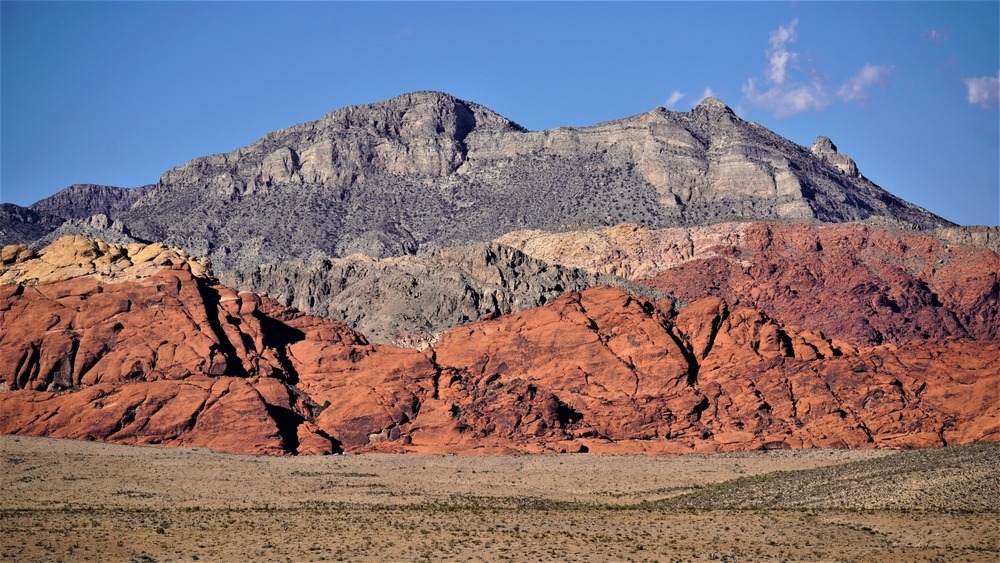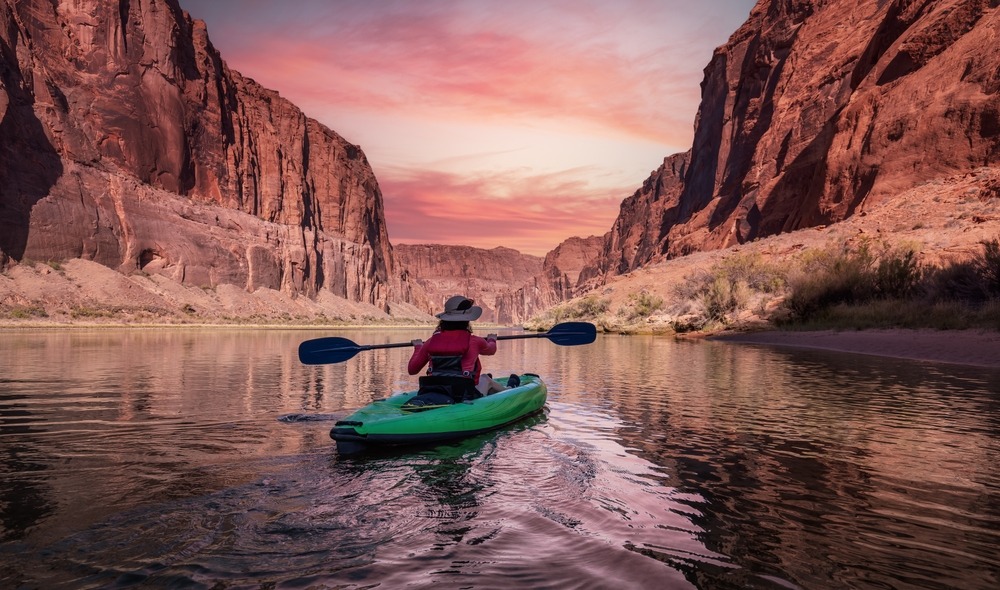History of Red Rock Canyon
Red Rock Canyon National Conservation Area, located just west of Las Vegas in Nevada’s Mojave Desert, is one of the most striking geological landmarks in the American Southwest. Known for its vivid red sandstone peaks, towering cliffs, ancient rock formations, and scenic desert landscapes, Red Rock Canyon is a geological wonder and a cultural treasure. The area has been home to Indigenous peoples for thousands of years and continues to inspire hikers, climbers, photographers, and nature lovers from around the world.
Geological Formation and Natural History
The formation of Red Rock Canyon began over 600 million years ago, when the region was submerged beneath a vast inland sea. Sedimentary rock layers formed over millennia, including the Aztec Sandstone that gives the canyon its iconic red hue. The vivid coloration is due to iron oxide deposits that oxidized over time. Tectonic activity during the Mesozoic era caused massive faulting, folding, and uplift, creating the dramatic rock escarpments and ridges seen today. The Keystone Thrust Fault, which pushed older gray limestone over the younger red sandstone, is one of the most prominent geological features of the canyon.

Indigenous Heritage and Early Inhabitants
Long before settlers arrived, Red Rock Canyon was inhabited by Native American cultures, including the Southern Paiute and the Ancestral Puebloans. These early peoples left behind petroglyphs, pictographs, roasting pits, and stone tools, many of which remain preserved in the canyon’s protected areas. The canyon was a source of food, water, and spiritual significance, with springs and shaded alcoves providing life-sustaining resources in the desert.
Modern Preservation and Recreation
In the 20th century, Red Rock Canyon became a favorite spot for nature enthusiasts, hikers, and rock climbers. Its unique desert ecology and stunning scenery prompted conservation efforts, and in 1990, the area was designated as Nevada’s first National Conservation Area under the Bureau of Land Management. Today, it draws over two million visitors annually and offers a 13-mile scenic drive, more than 30 miles of hiking trails, and internationally recognized climbing routes. Despite its proximity to Las Vegas, Red Rock Canyon remains a place of profound natural beauty and tranquility.

Top 25 Attractions and Experiences in Red Rock Canyon
1. Scenic Loop Drive: This 13-mile one-way drive offers access to the most scenic vistas and trailheads, showcasing the canyon’s dramatic geology and desert vegetation.
2. Calico Hills: These signature red and orange sandstone formations are ideal for hiking, photography, and scrambling over ancient rock layers.
3. Ice Box Canyon: A shady, narrow canyon hike that leads through seasonal waterfalls and lush microclimates, perfect for escaping the desert heat.
4. Red Rock Overlook: This easily accessible overlook provides panoramic views of the entire conservation area, particularly stunning at sunset.
5. Turtlehead Peak: A challenging hike to a summit that rewards with sweeping 360-degree views of Las Vegas, Red Rock Canyon, and beyond.
6. Sandstone Quarry: Once the site of a historical sandstone quarry, this area now offers picnic sites and access to multiple trails, including Turtlehead and Calico Tanks.
7. Calico Tanks Trail: A moderately strenuous hike through colorful canyons that ends at a natural water catchment with views of the Las Vegas skyline.
8. Lost Creek Trail: This family-friendly trail features a seasonal waterfall, petroglyphs, and interpretive signs that highlight desert flora and fauna.
9. Willow Springs: Home to prehistoric rock art, ancient agave roasting pits, and a lush canyon environment that contrasts the surrounding desert.
10. First Creek Canyon: An off-loop hike through a peaceful canyon with a hidden waterfall and potential wildlife sightings, including bighorn sheep.
11. Keystone Thrust Fault: This geological landmark illustrates the clash between two major rock formations and provides insight into Earth’s tectonic history.
12. La Madre Spring Trail: A longer hike leading to a natural spring at the base of La Madre Mountain, offering shade and a rich habitat for desert animals.
13. Kraft Boulders: A favorite spot for boulderers and climbers of all skill levels, located near the Calico Basin entrance.
14. Petroglyph Wall: A short trail near Willow Springs leads to a wall of ancient Native American carvings that offer a glimpse into early desert life.
15. Pine Creek Canyon: Known for its riparian corridor and seasonal creek, this hike takes you through pine groves and remnants of old homesteads.
16. Red Spring Boardwalk: An accessible loop trail featuring a wooden boardwalk over wetlands fed by a spring, with educational signage and picnic areas.
17. Oak Creek Canyon: A lightly trafficked trail ideal for solitude, birdwatching, and appreciating the diversity of plant life in the canyon system.
18. White Rock Loop: A moderate 6-mile loop that ascends into the higher elevations of Red Rock Canyon, offering great views and wildflower blooms in spring.
19. Fossil Ridge Trail: This trail provides views of fossilized sea life embedded in the rock, remnants from when this area was submerged underwater.
20. Rainbow Wall: One of the most visually stunning cliffs in Red Rock Canyon, popular with experienced rock climbers and advanced hikers.
21. Bridge Mountain: A challenging scramble that includes a natural rock bridge at its summit and some of the best views in the region.
22. Birdwatching: Red Rock Canyon is home to over 100 species of birds, including roadrunners, golden eagles, and hummingbirds, especially active in spring and fall.
23. Rock Climbing Routes: With hundreds of traditional and sport climbing routes, Red Rock is a world-class destination for climbers.
24. Photography Opportunities: Sunrise and sunset offer spectacular lighting across the canyon’s red sandstone, perfect for landscape and wildlife photography.
25. Visitor Center: The Red Rock Canyon Visitor Center features interactive exhibits on geology, flora, fauna, and conservation, along with ranger-led programs and a gift shop.
Conclusion
Red Rock Canyon is more than a striking natural landscape—it is a living museum of geology, a cradle of ancient cultures, and a sanctuary for desert life. Just minutes from the bright lights of Las Vegas, this conservation area offers a stark and beautiful contrast, drawing travelers into a world of silence, shadow, and stone. Whether you’re seeking a meditative hike, an adrenaline-fueled climb, or a peaceful view of nature’s artistry, Red Rock Canyon promises a powerful and unforgettable experience.

































